Seriation Studies
Migration Period
Using the catalogue in B nermans Die Völkerwanderungszeit Gotlands,
Stockholm 1935 a sample from systematicly done excavations was tabulated as
below.
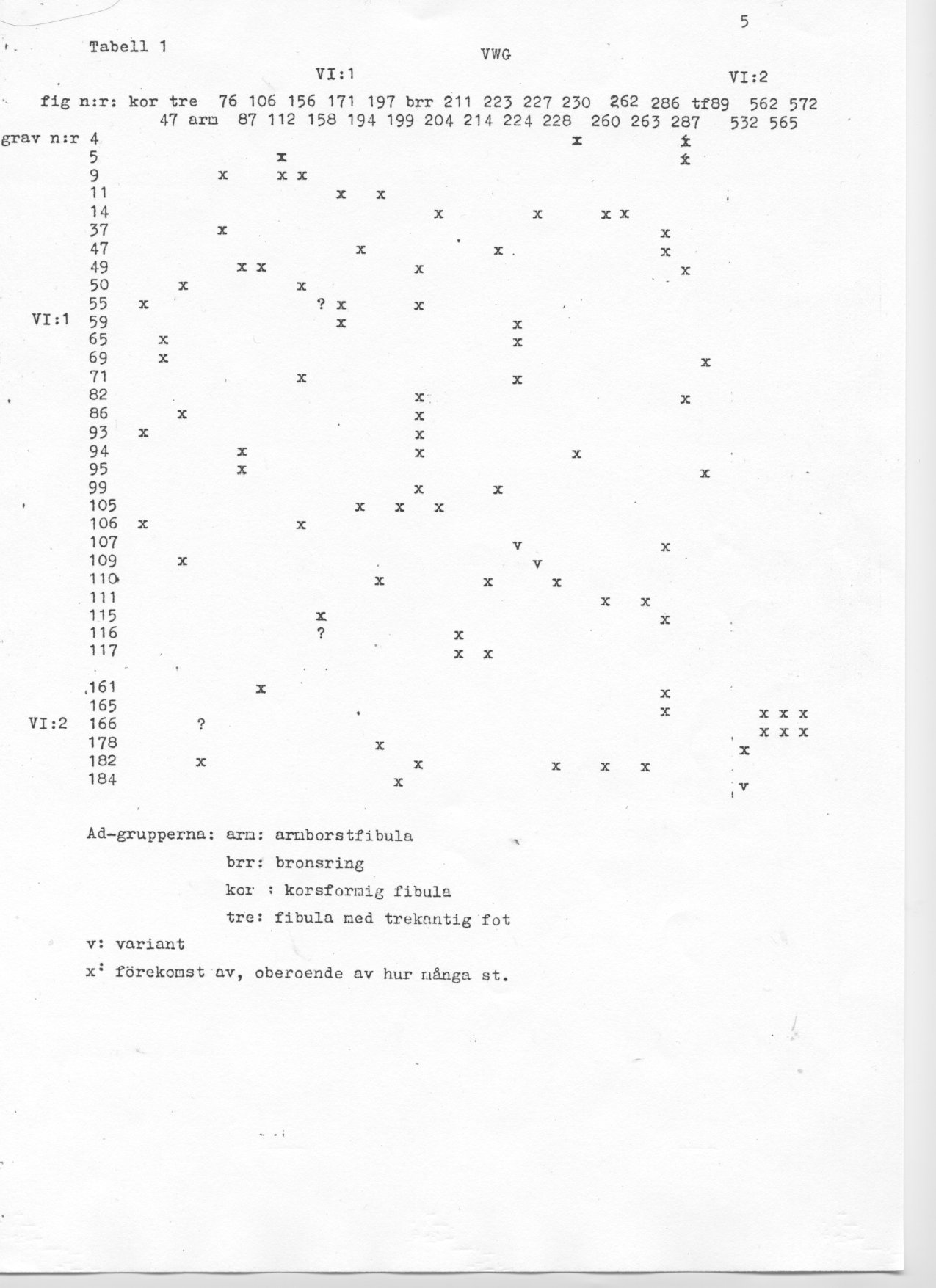
Reordering both the rows and the columns in the order of the outhermost and
after some iterations the following ordered seriation can be seen:
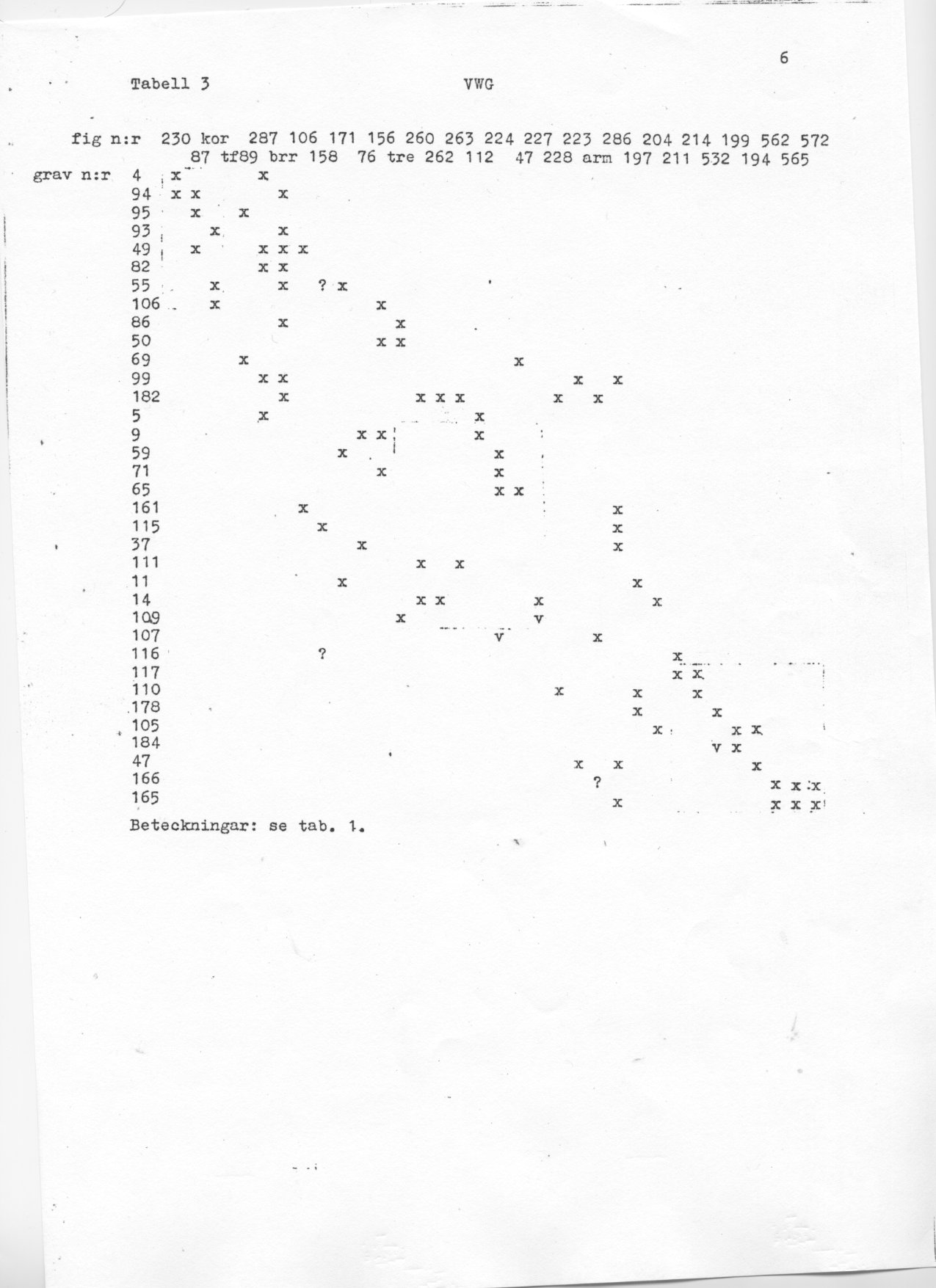
Other ways of defining the artefacts and other source criticism result in other
seriations. These can be compared, like the one based on U Näsmans material in:
Grundvalen för en tudelning av äldre germansk jänålder, Tor 1970-1971, Uppsala
1971. See Tabell 4. Other ways of ordering, like using the next outhermost get
another result, even if it is done systematic, see tabell 5:
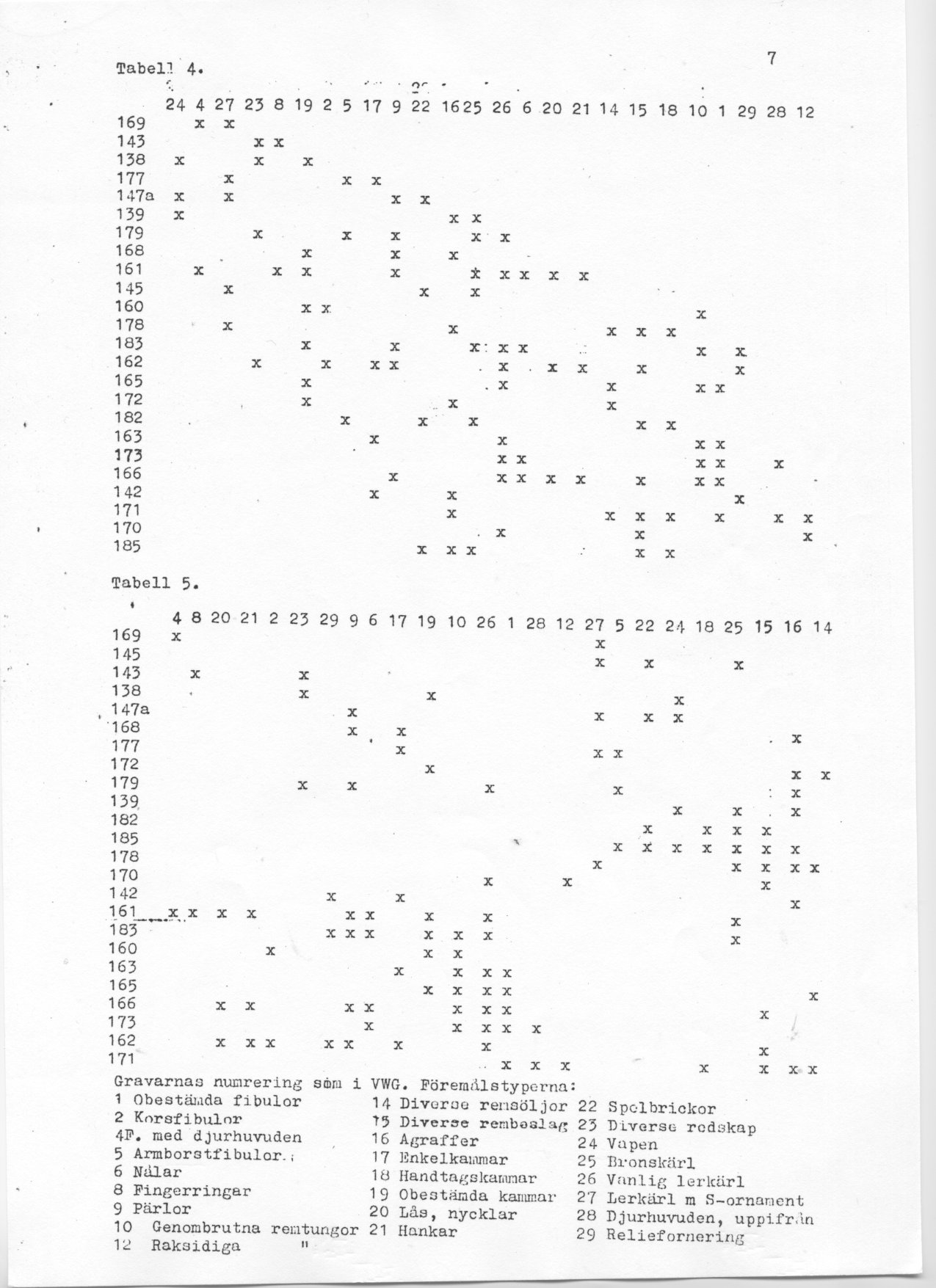
Bronze Age
The catalogue in Montelius treatease from 1885 about the Scandinavian Bronze
Age was seriated. Period 1 got no usable combination but the other periods
followed nicely as can be seen from the markings of periods upptil and to the
right.

A few dendrodated oak-cist are included: on row 6 Muldhöj 1365 bC, on row 8
Borum Eshöj 1344 bC, on row 18 Store Kongehöj 1385 bC and on row 22 Trindhöj B
1347 bC.(Dates from Randsborg o Christensen 2006.)
Montelius first divided the material in an older bronze age and a younger.
Then each period was divided in a typical period and one that led upp to it and
one later part. Absolute chronology he partly got from Egyptian murals. So he
could divide the bronze age in 6 periods of 200 years each. Later this was
reworked, partly as can be seen in the diagram of Magnus Holmquist made ca
1970.
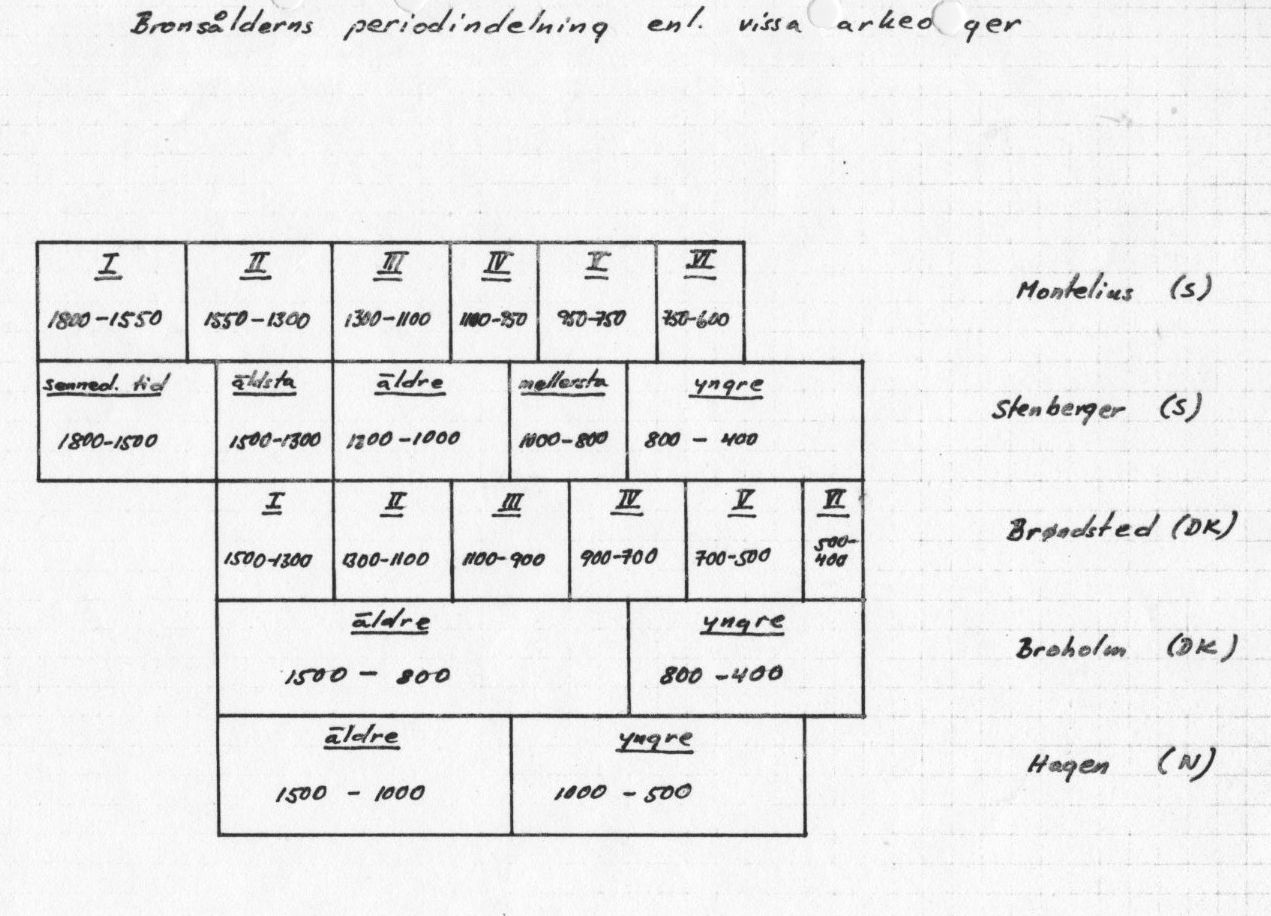
Nowedays the periods can be given timespans with the help of 14C, al dates bC:
II 1500 - 1300
III 1300 - 1100
IV 1100 -920
V 950 - 800
VI 800 - 520
See: K Hornstrup et al 2012.
or:
I 1750 - 1500
II 1500 - 1300
III 1300 - 1100
IV 1100 - 920
V 920 - 720
VI 720 - 550
See: Olsen et al 2011, used by Bertilsson 2018.
The different types as seen by Montelius and in the seriation order are
partly shown in the working paper below:
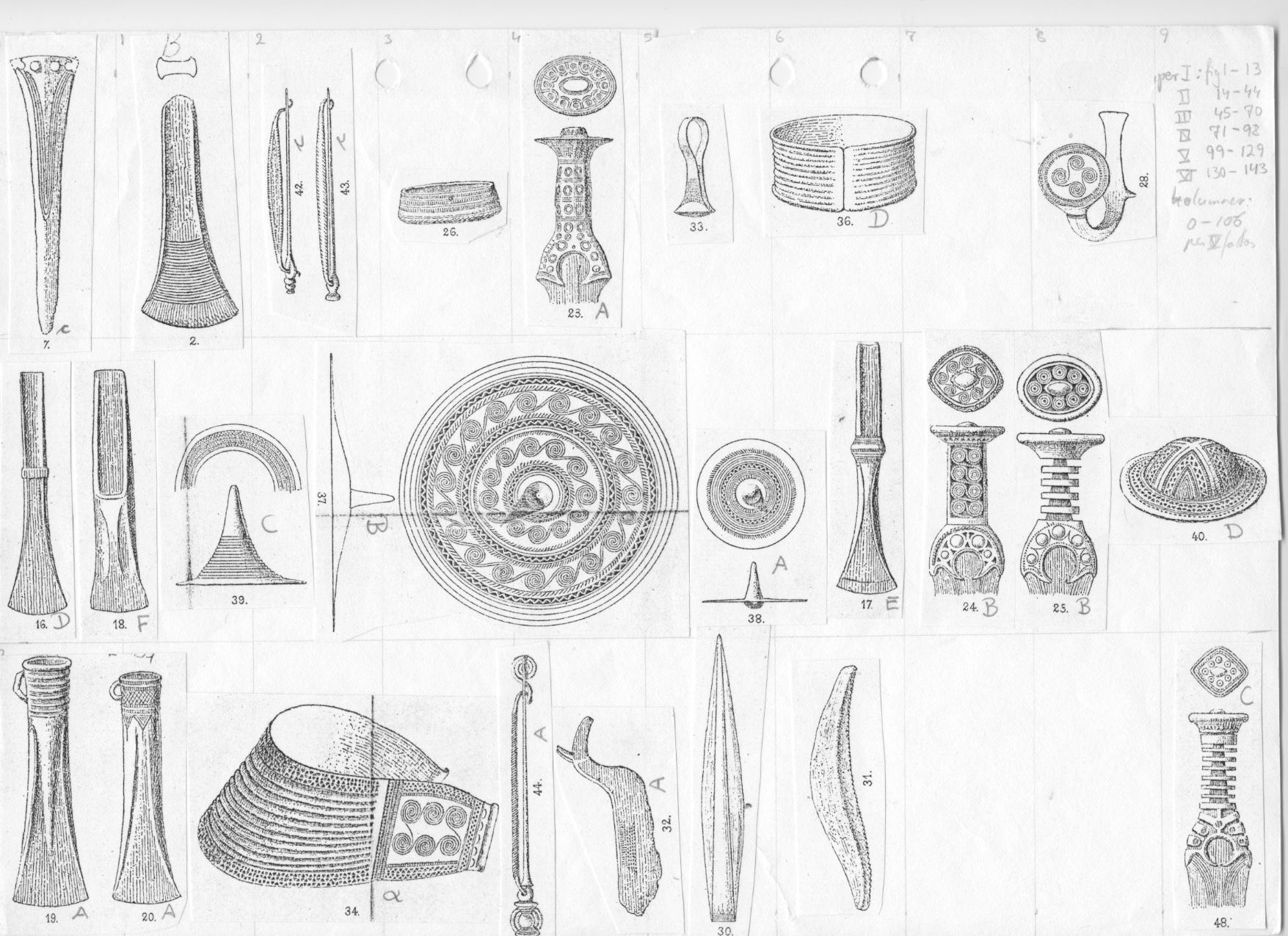
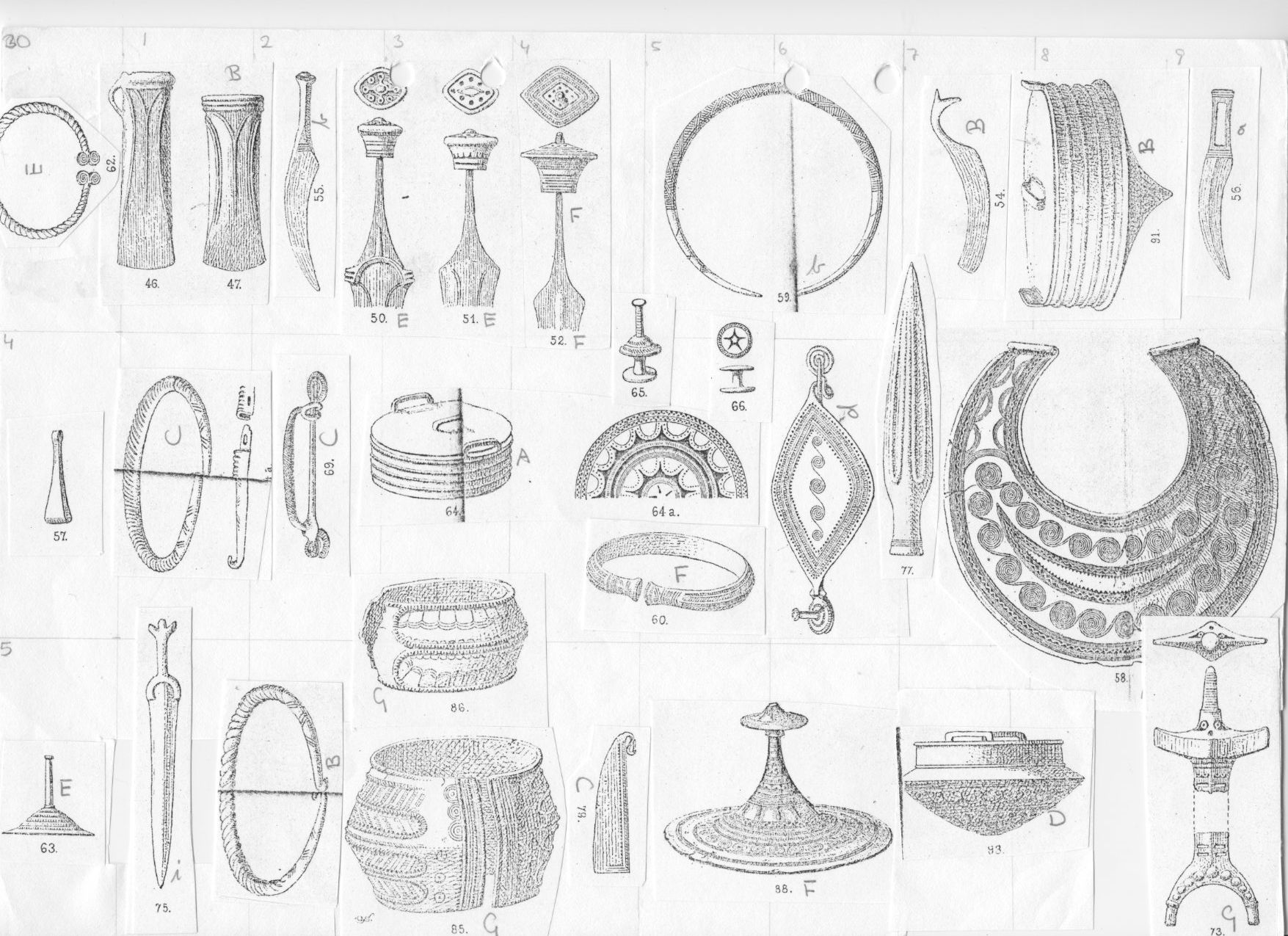
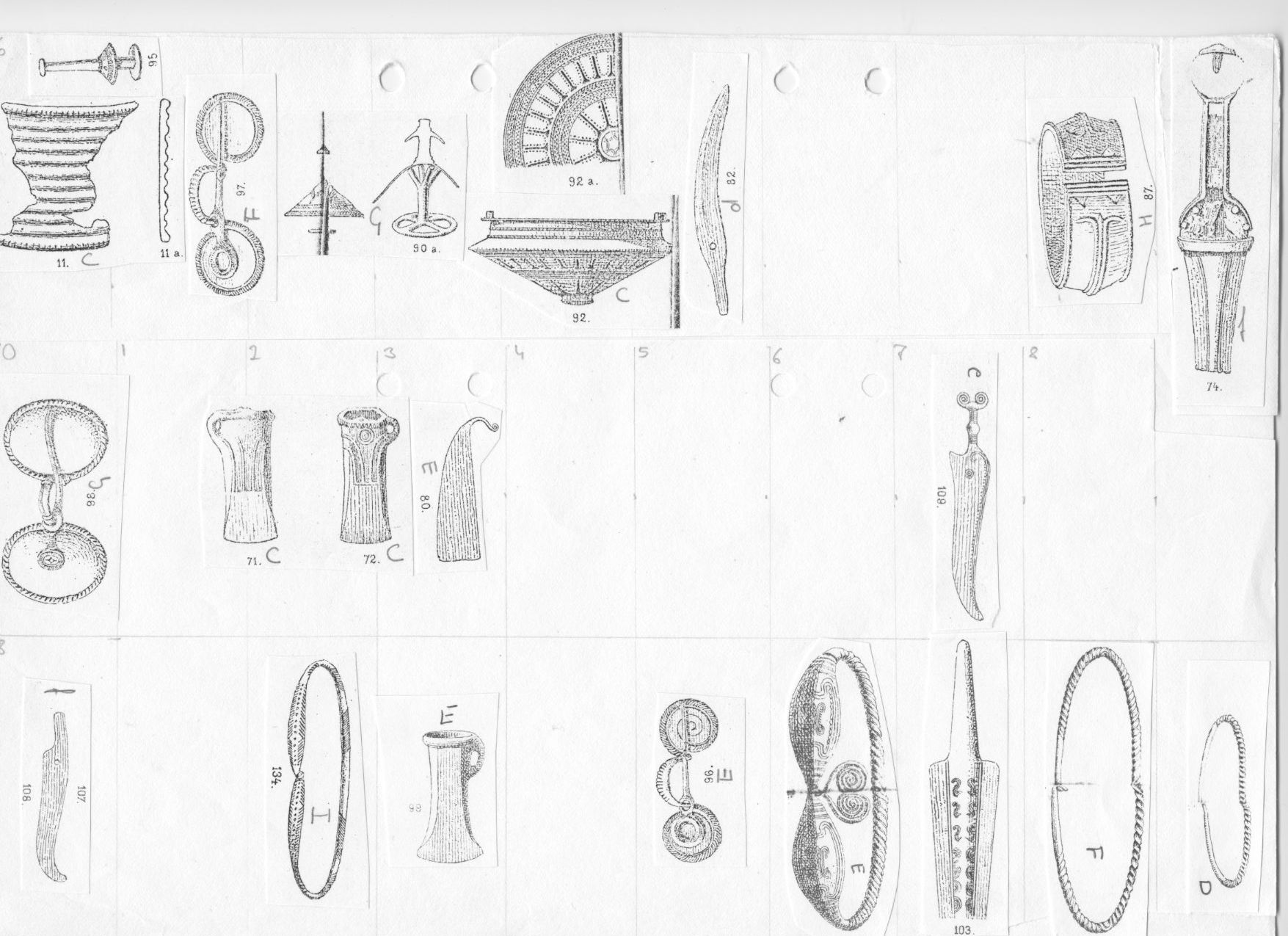
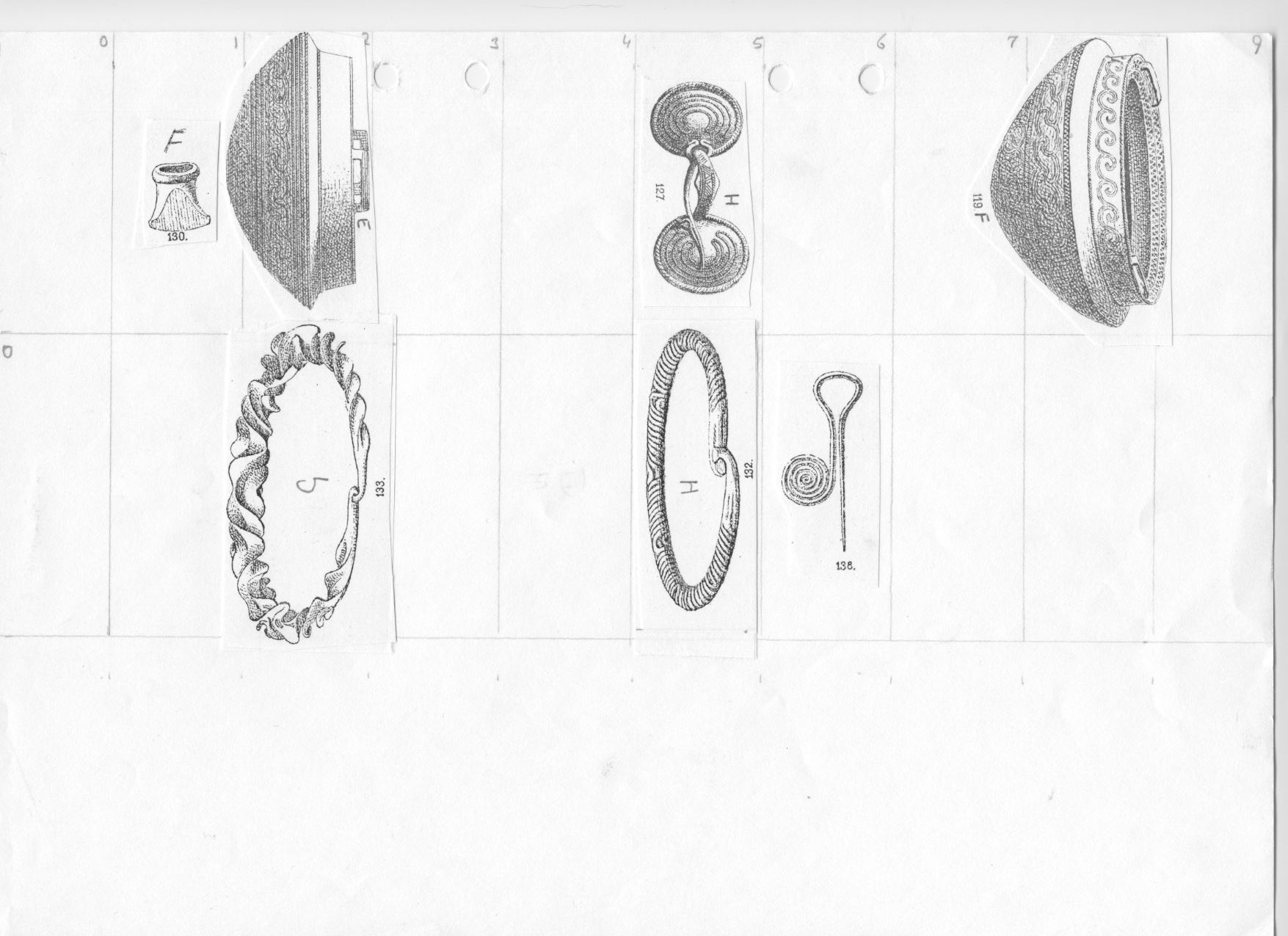
Bronze age cairns are largest when most of them were bild as is shown below
for the cairns from Gotland, Södermanland and Östergötland. Data from Oldeberg
1974. Sizes in metres, from 10 meters on.

The cairns with a depression, kraterrösen, have the largest depression in
the highest cairns, as shown below. The logaritms of the sizes are
resized/compared to the largest values who are given the value 1.0. Values from
a list given by Nilsson.
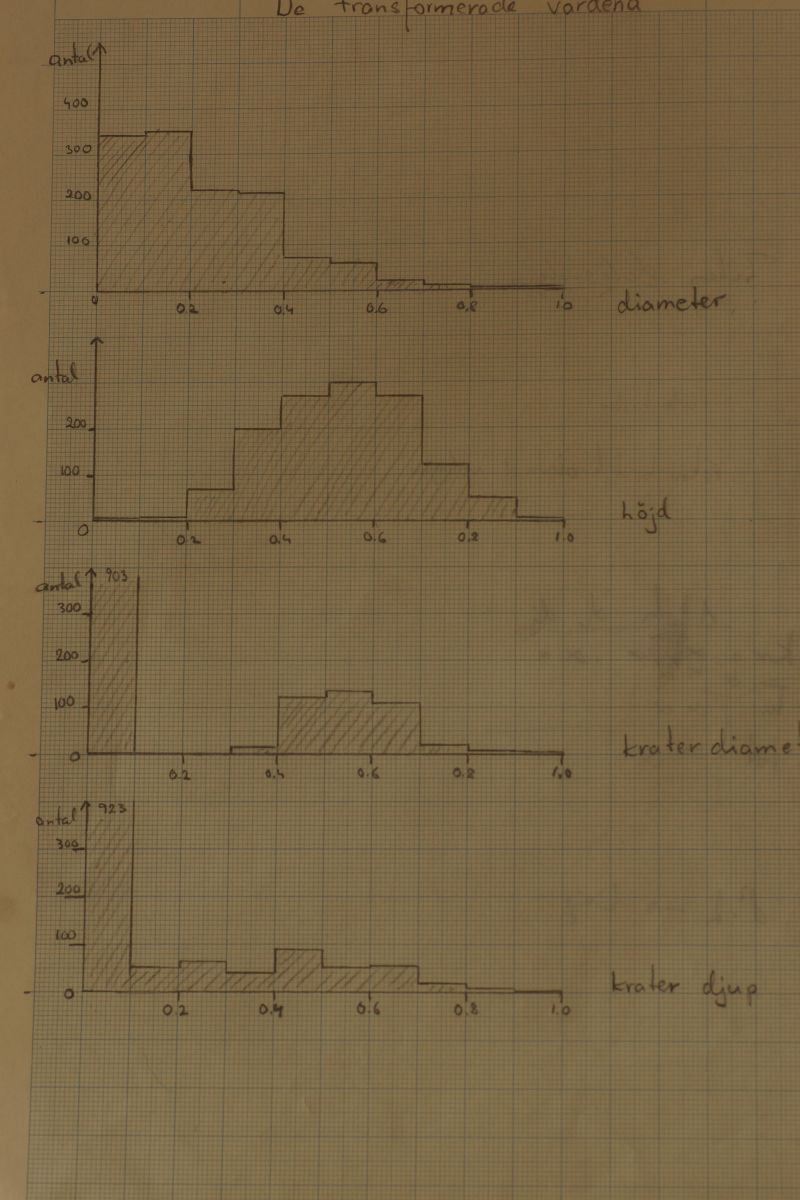
Litt:
U Bertilsson 2018: Chapter 7. In the Beginning There Was the Spear:, In:
Prehistoric Warfare and Violence Quantitative and Qualitative Approaches, Cham.
KM Hornstrup, J Olsen, J Heinemeier, H Thrane o P Bennike 2012: A new
absolute danish Bronze Age Chronology, In: Acta Archaeologica vol 83, Oxford.
O Montelius 1885: Om tidsbestämning inom bronsåldern med särskildt afseende
på Skandinavien, Kungl. Vitterhets- historie- och antikvitetsakademiens
handlingar, 30 = N.F. 10, Stockholm.
PE Nilsson 1981. Om bronsåldersgravars läge på Gotland. Stencil,
Stockholm.
A Oldeberg 1974: Die ältere Metallzeit in Schweden I, Stockholm.
J Olsen, KM Hornstrup, J Heinemeier o P Bennike 2011: Chronology of the
Dqanish Bronze Age Based on 14C Dating of Cremated Bone Remains. The American
Journal of Science 53(2).
K Randsborg o K Christensen, 2006,Bronze Age Oak-Coffin Graves,
Köbenhavn.
.........................
Birka Graves by Computer 1978.
The metod of seriation isw given in two version, one in text and another in the
table. There are differensen between them and my present code is a little
different from both.
The coin datings can be summarized on a logarthmical paper, just to indicate a
growing population. Desertion of the town is set to after the year 1000. The
beginning to about 780. In the seriation 750 is to early.
The earliest burials are like those on ordianry farms, with few artefacts.
Traditionaly the bjärköarätt was promulgated by king Björn III in 808. After
that the rich chamber graves appear.
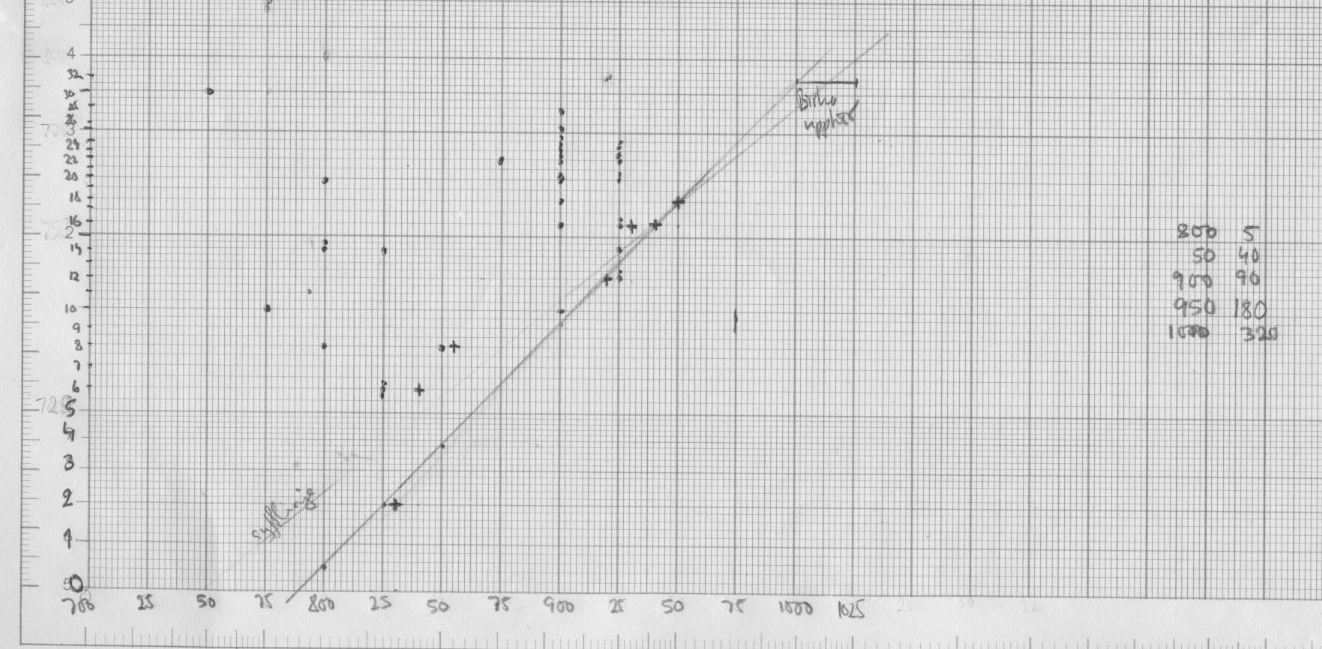
There is no horisontal chronology around the town. The different grave
monuments get tighter and tighter packed as if on different small farm grave
fields. At Borg there is a remarkable increase in the later part of the 900´s.

The relative position of the different grave finds in the seriation are
summarized in the work sheets below:

The relative position of the different artefacts on the plates in the Tafeln
from 1940 are shown on the work sheet below. Tentatively artefacts in the same
find combination date each other, all in groups of 10 positions:
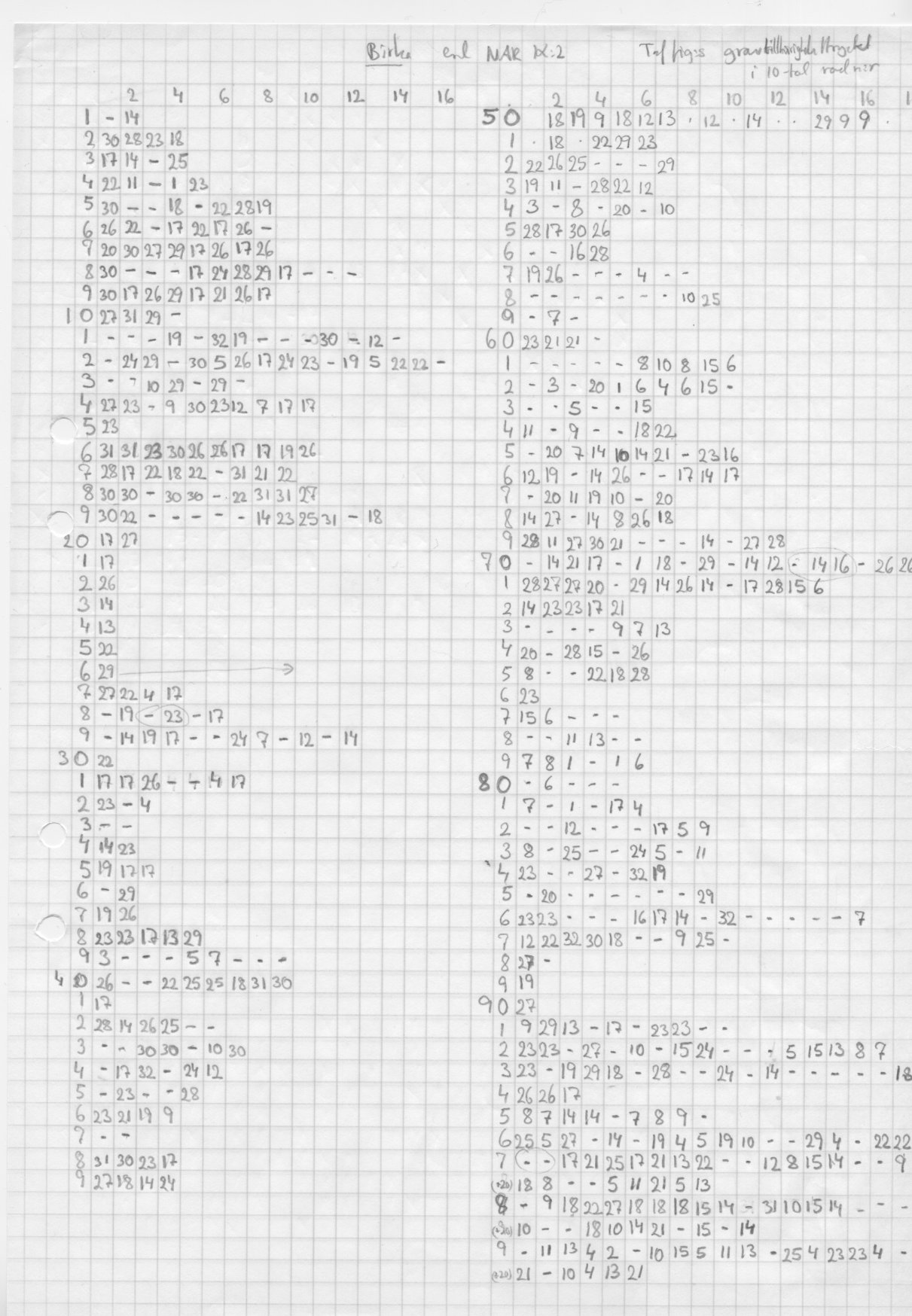

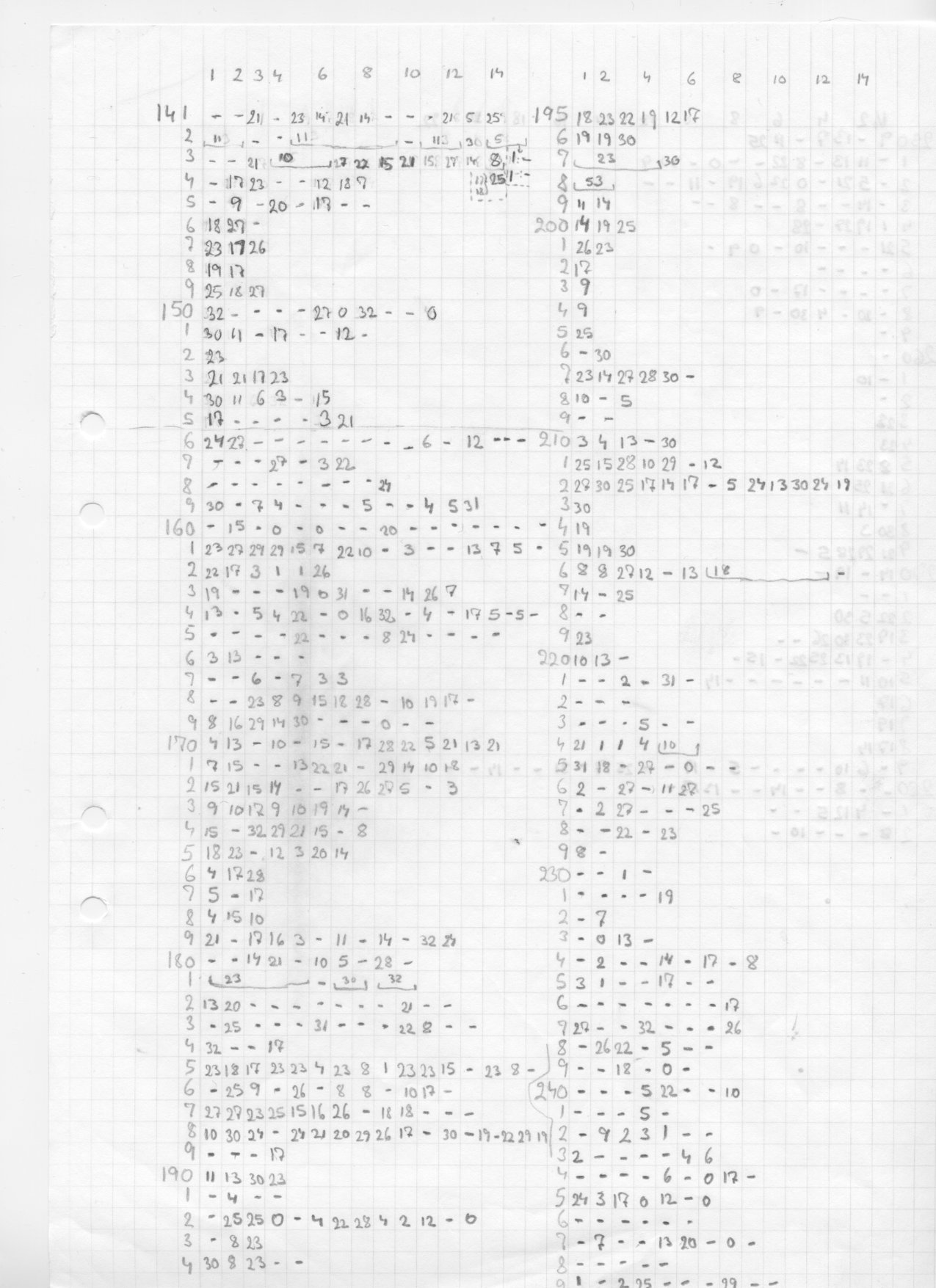
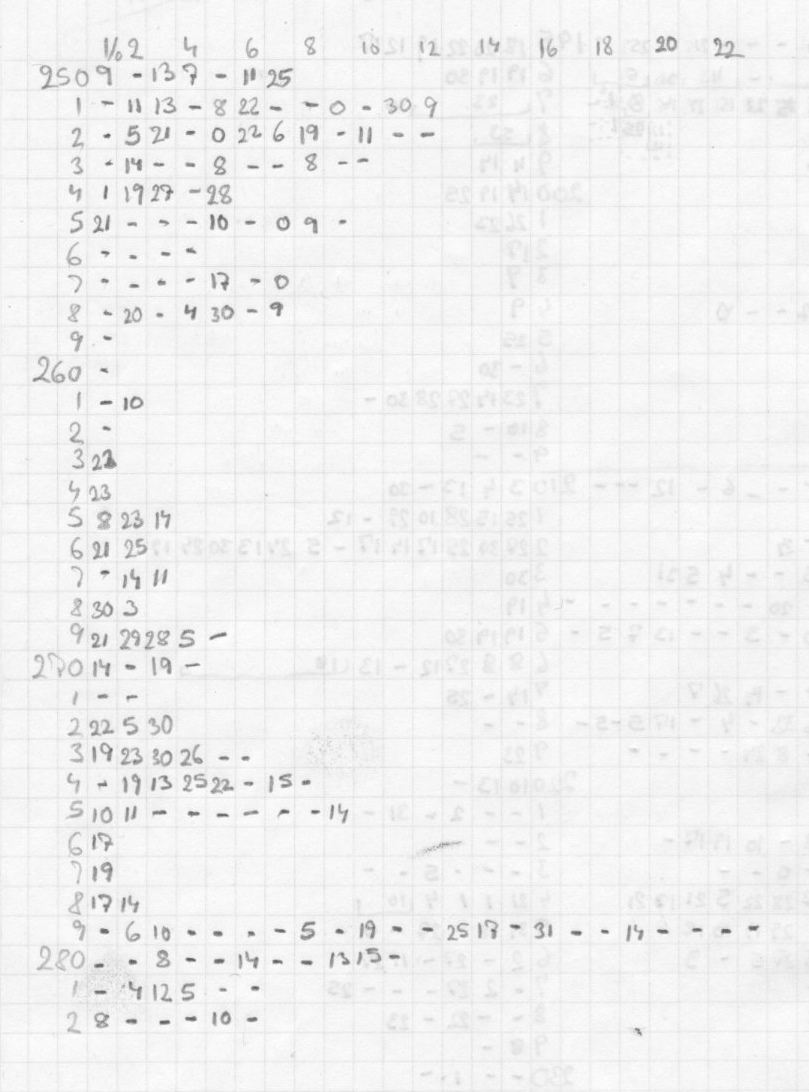
Litt:
Arbman, H 1940 Birka : Untersuchungen und Studien. 1, Die Gräber : Tafeln,
Stockholm : Vitterhets-, historie- och antikvitetsakad.
Arbman, H 1943 Birka : Untersuchungen und Studien. 1, Die Gräber : Text,
Stockholm : Vitterhets-, historie- och antikvitetsakad.
Saers, J 1978 Birka Graves by Computer. Norwegian archaeological review
1978(11:2), p. 84-91.
Mode
Mode, the always changing dress fashion is something pecular to Europe.
Already in the stone age the danish flint stone axes can be dated within a
generation. Small changes in their form occur all the time and can be learned.
In roman times it is taken for granted that with time the basins change between
the Östland and the Westland form. In sumerian times they are always the same,
millenium after millenium. Real stable stability in the sumerian culture as in
most of the world. In Europe it is more the stability of a bicycle, always
swinging around the midpoint. The hemline or skirt length has a period of ca
105 years, 3 x 35 years. Short 1640, 1740, 1860 etc. (JK1940,122). The dress
forms are bell-shaped 1725 - 1759, back-fullnes 1760 - 1795, tubular 1796 -
1829 and then again bell-formed 1830 - 1867, back-fullnes and then tubular 1900
- 1937 ( FM 1973,121), to be continued. Consecutive cykles mostly from egyptian
history are describet in Flinders Petrie 1911 and summerized in curves in his
fig 53.
Litt:
FM: 1973 Fashion marketing : an anthology of view-points and perspectives /
edited by Gordon Wills and David Midgley. (2013 E-book).
JK: 1940 J Richardson o AL Kroeber Three Centuries of women´s dress fashion.
A Quatititavie analysis, Berkeley
WM Flinders Petrie 1911 (1922),The Revolutions of Civilization, London.
Sorting tables
The finds of bones from the different houses at th Vallhagar settlement on
Gotland ( Stenberge o Klindt-Jensen 1955) have been seriated with different
methods (Johansson o Saers 1988). The material in the table can be resorted in
a mechanical way with simple rules and give about the same result as a CA.
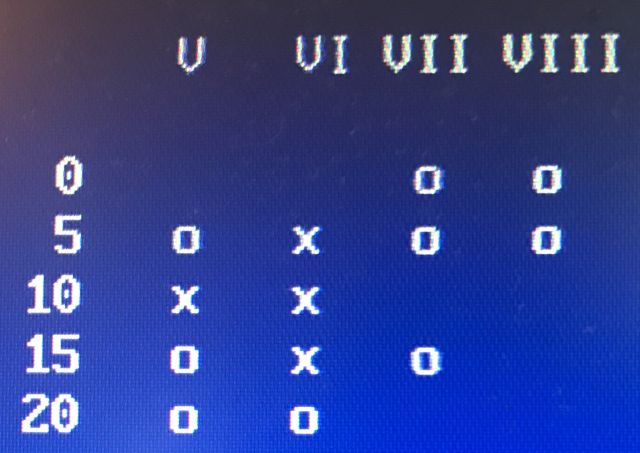
It may be diffucult to explain what trend is seen, in the viking phase the
meat consumed comes more often from smaler animales than cows and alse soewhat
more is consumed. In any case that what at first looked like a village is a
single farmsted, they just didn't tidy up when they erected new buildings
instead of repairing the old ones.
The reordering method used finds for each row the highest value, the values
on the right and left are then divided with the distance in number of columns.
The same is done with the columns and placed in in a seperate table. The
numbers in that table are used for sorting the rows by taking the highest
number in each row and order the rows accordingly. Then the same is done with
the columns and the resulting new, ordered table is used for the next
iteration. Then the process is repeated for some time and the result is prely
explorativ.
As an exemple the table of african paleolithic from Binford 1972,268 is
used. Binford used a factor anlysis with Bio Med and differentiates between use
of heavy tools and small tools. Ungraded variability ( aa,254) is taken for
granted. But as the table show it is possible to see "drifts" in the
material:
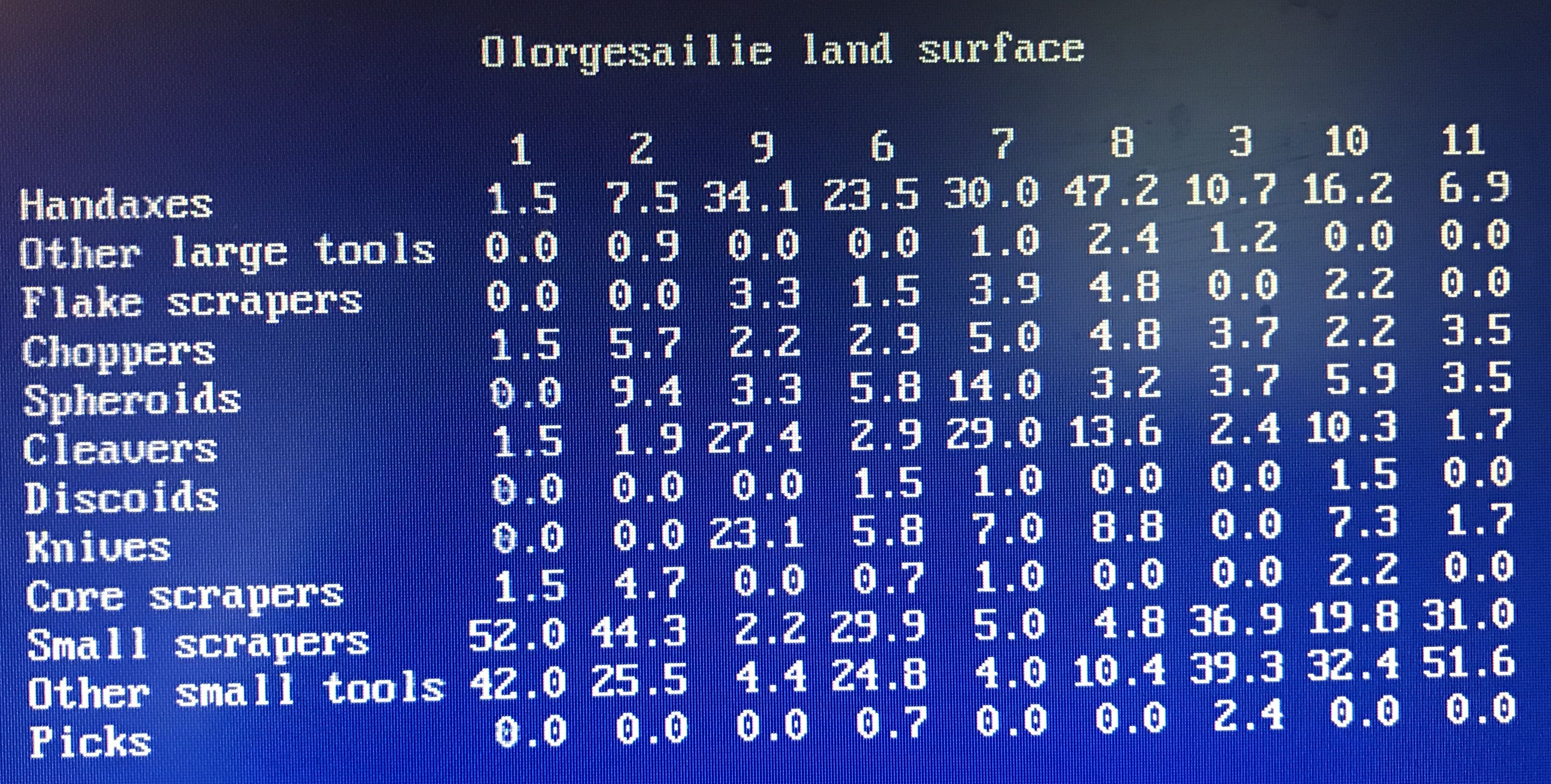
A summary of the column orders do show a trend from the oldest layer 1 to
the youngest 11.
An o stands for one and x for 2 or 3 occurences. The columns show relative
place orderings 1 and 2, 3 and 4 and the rows the numbers used by Binford. Land
surface 3 got placed between 8 and 10 all others orderly follow the diagonal.
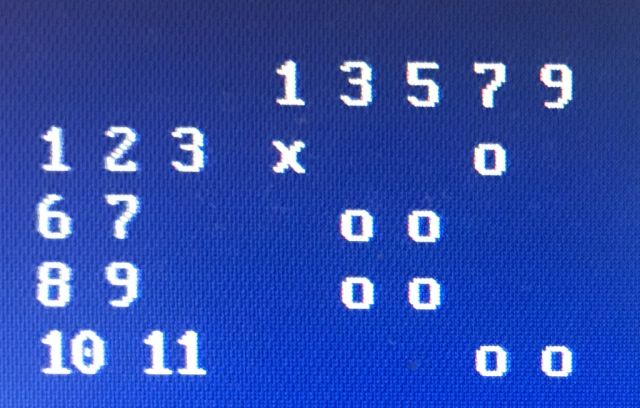
A study of the complete set of tables of shaped tools used by Binford can be
summarised as below.
Olorgesaillie shows clearly a change by time, in the others it is not that
clear and Kalambo Falls 8 is completely out of order. The artifacts also change
form with time, someting that is missed in this kind of statistics. The
direction of time not known to me since I do not know how the numbering of
levels goes, from lower to higher or the other way as it was of no interest for
Binford.
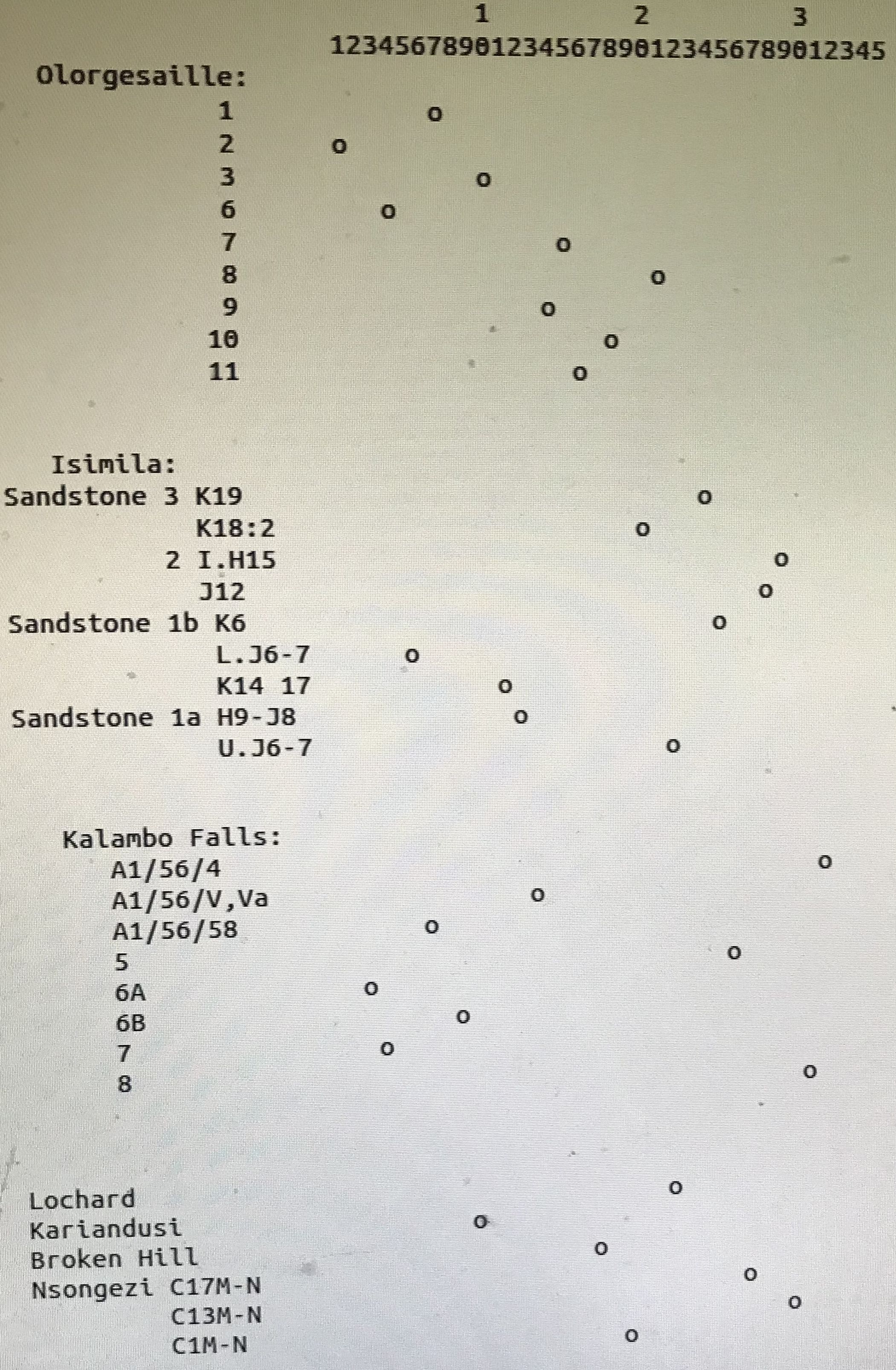
The rows show the same grouping as Binford noted, smaler versus bigger
tools, but since there is dynamics in the cultures the theories presented by
Binford must be reworked, now, after 50 years.
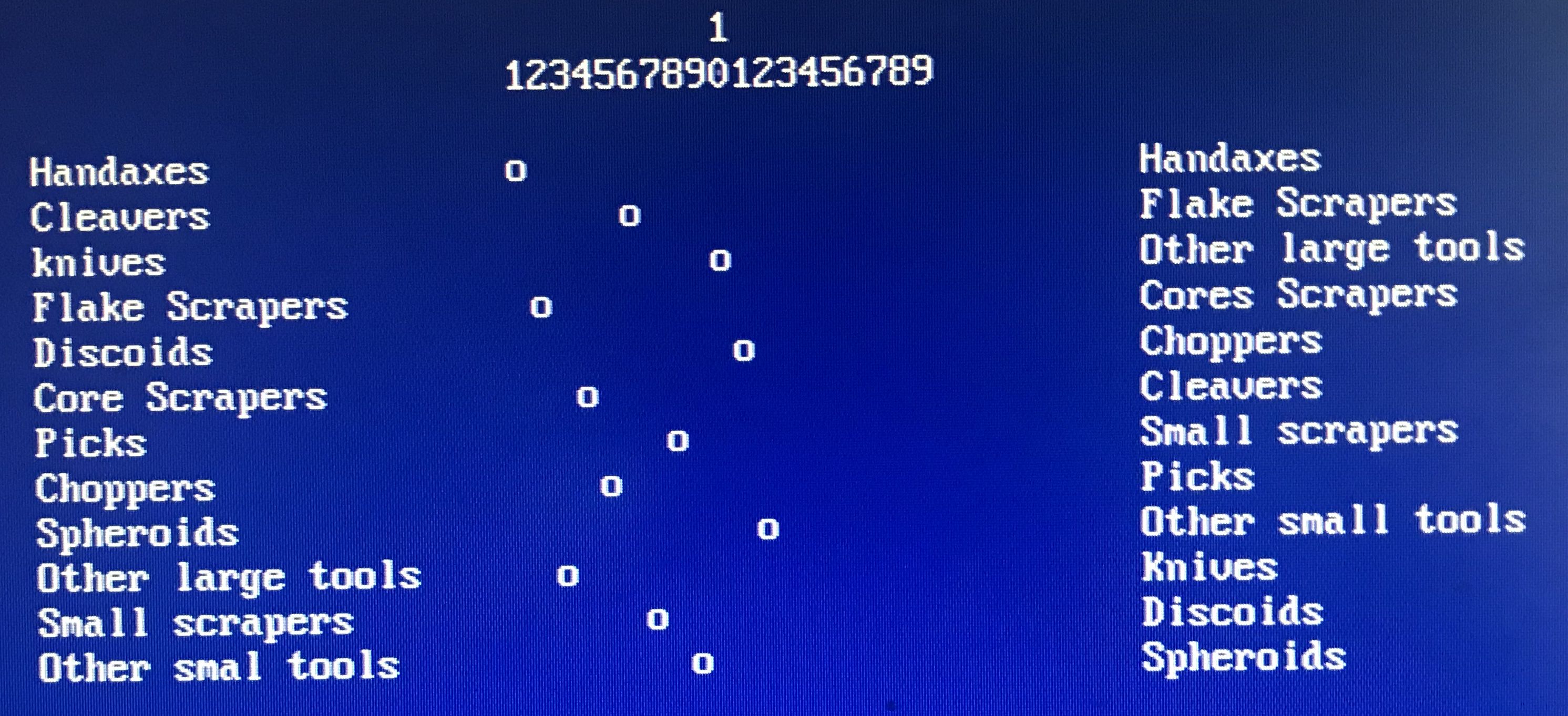
For a glimpse of the matematics part of the input is shown, in the first row
the original row number, then 1/4 of the sum and then the numbers in the
tables. First column gives the original row number, followed by 1/4 of the sum
and then the original numbers.
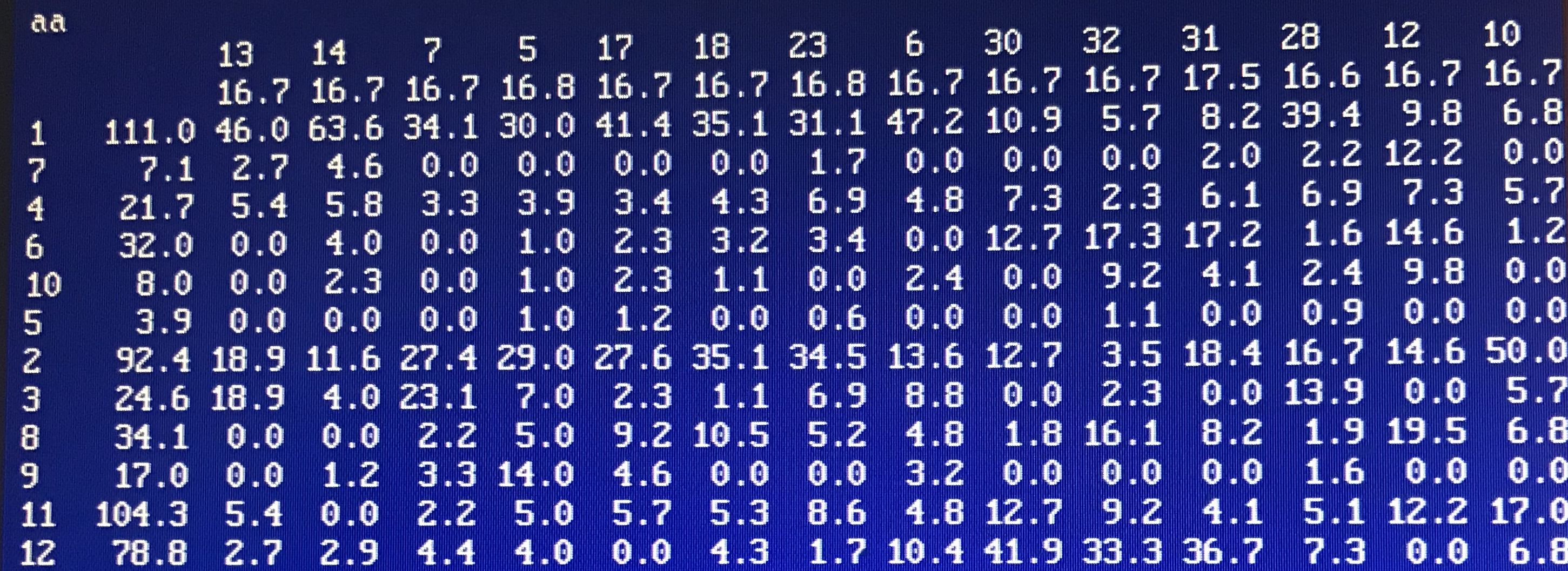
The next picture shows the calculation on the columns:
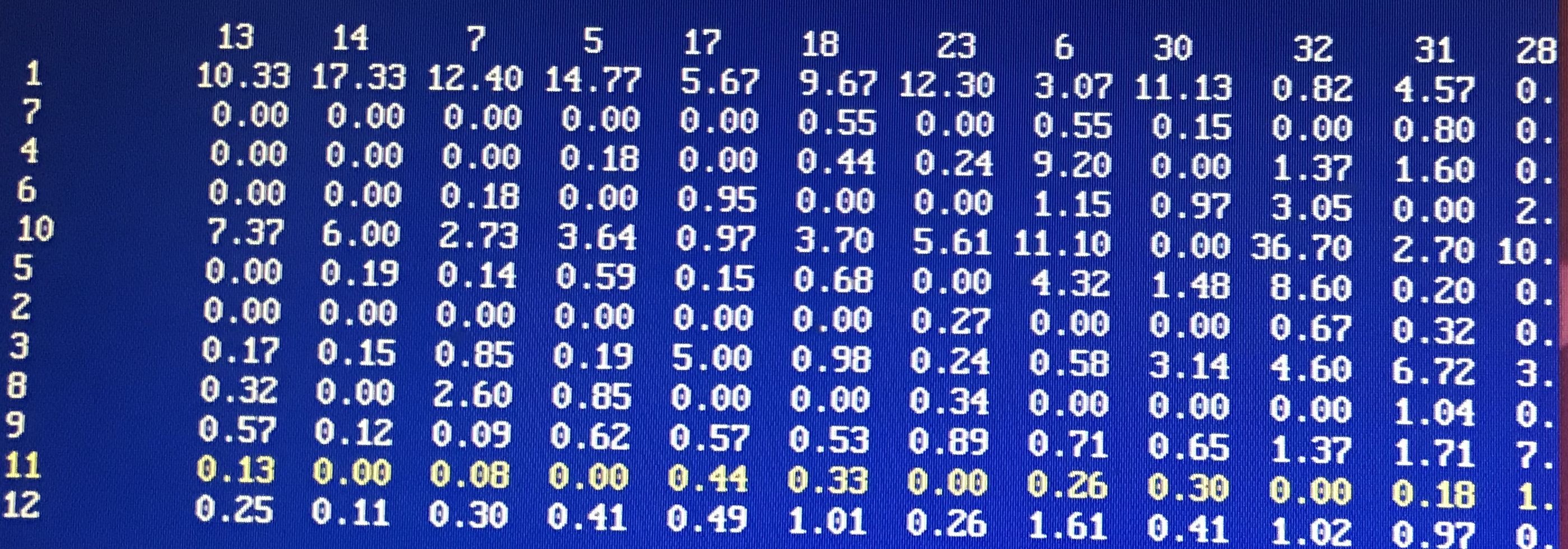
and the last picture part of the calculations on the rows:
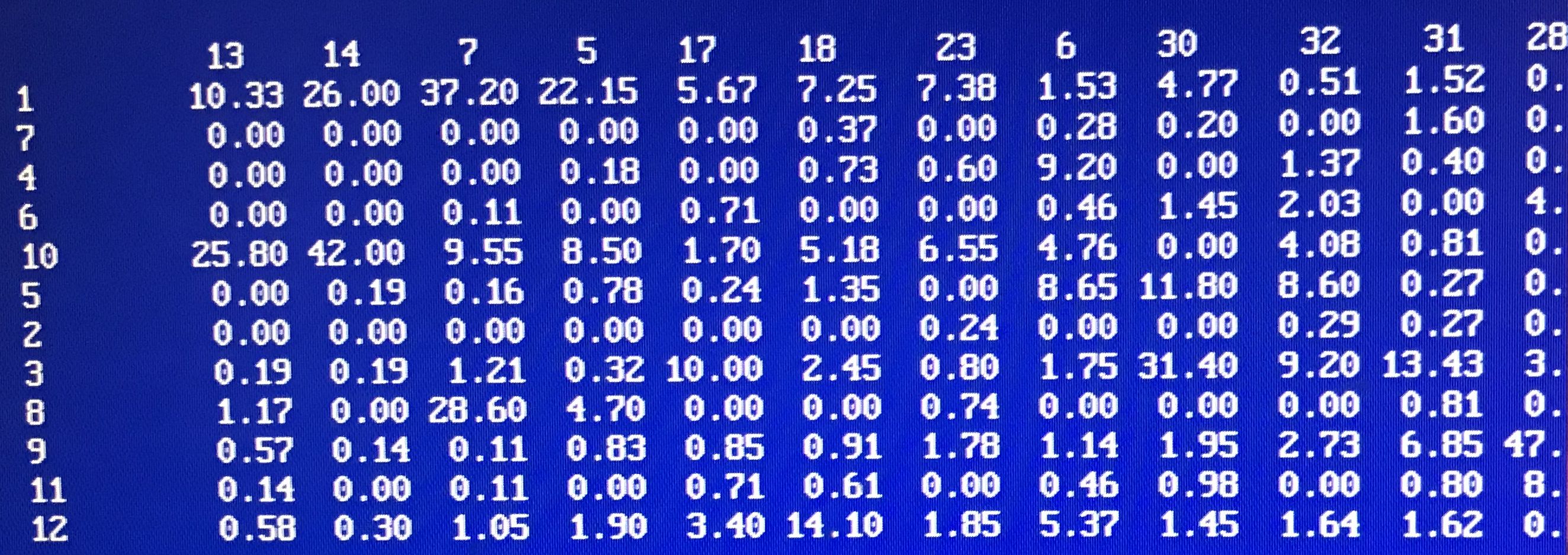
From Hahns work on Aurignacian and Gravettian (1977) tables 1 and 3 have
been seriated. The ordering in his seriation (1977, Abb 61), has been completed
with C14-datings, see fig A below. The C14-datings are taken from his page 168
and span the time 20.000 BP to 40.000 BP. As can be seen only the younger part
of his seriation has C14-datings. In part B my seriation is shown to be upside
down and have the datings spread over the whole seriation.

o = 1, x = 2-3, O = 4 -
The relative reordering of the many finds given here below. As an exemple
Ripiceni-Izvor lower level is on rowe 12, the middle level on rowe 39 and the
upper on rowe 49. Al in the right order.
1 Langmannersdorf A, 2 Calinsti III, 3 Klepice, 4 Bistric-Lutarie
IICalinisti II
5 Calinesti II, 6 Törle VII, 7 Törle VI-IV, 8 Senfterberg, 9 Ranis 3
10 Rom-Dumbravita IIab, 11 Vogelherd IV, 12 Ripiceni-Izvor unten, 13 M.
Borky II, 14 Rom. Dombraita IIIa
15 Sirgenstein V, 16 Muralovka, 17 Kostenki I,3, 18 Breitenbach. 19
Willendorf II,4
20 Willendorf II,3, 21 Langmannersdorf B, 22 Kechnec, 23 Langmannersdorf C,
24 Stranska Skala
25 Kostenki I.2, 26 H.Stadel IV, 27 Zelenice, 28 Barca I.1-2, 29 Willendorf
II,2
30 Tincova, 31 Lommersum, 32 Sjuren I,4, 33 Nova Dedina, 34 Wildscheuer
III
35 Sirgenstein IV, 36 M.Obciny, 37 Sirgenstein III, 38 Gertzersdorf, 39
Ripiceni-Izvor Mitte
40 Kostenki I.5, 41 Krems Hundssteig, 42 Sirgenstein VI, 43 Zlutava, 44
ceahlau-Dirtu II, 45 Barca I,3
46 Vogelherd V, 47 Tibava, 48 Barca II, 49 Ripiceni-Izvor oben
Maybe the method gave a result that stil is of some value.
Some bronze artifacts from the rich Helgöfinds have been anlysed and
discussed in Grandin o Hjärtner-Holdar 2002. The finds are from the period 1 -
1000 AD and discussed as one block, constant in time.
After three different numberings the column of hgr stand for excavation
area, the work shop is nr 3. Finds from this area are spread all over the
table. Slip-tapps are concentrated in the second half of the seriation. Hgr3
maybe was suddenly deserted ca 600, otherwise the slip-tapps would have been
collected.
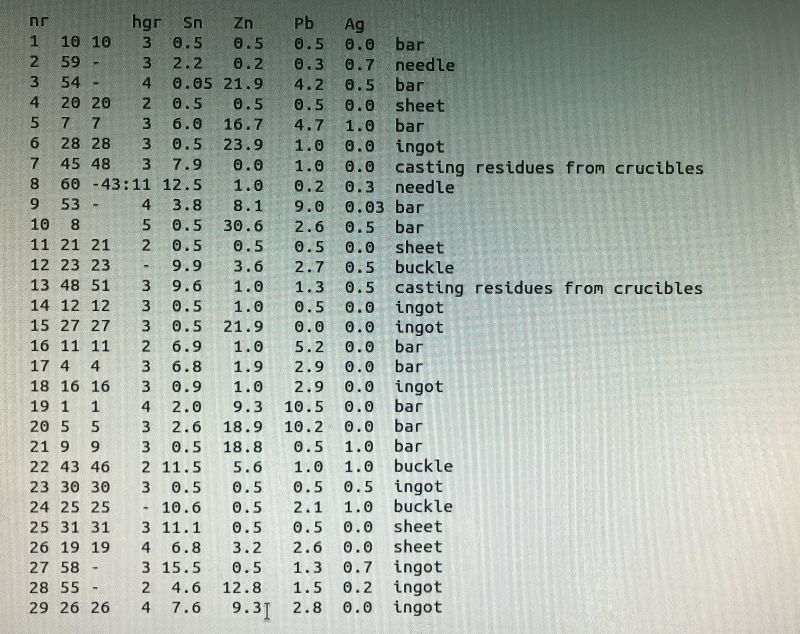
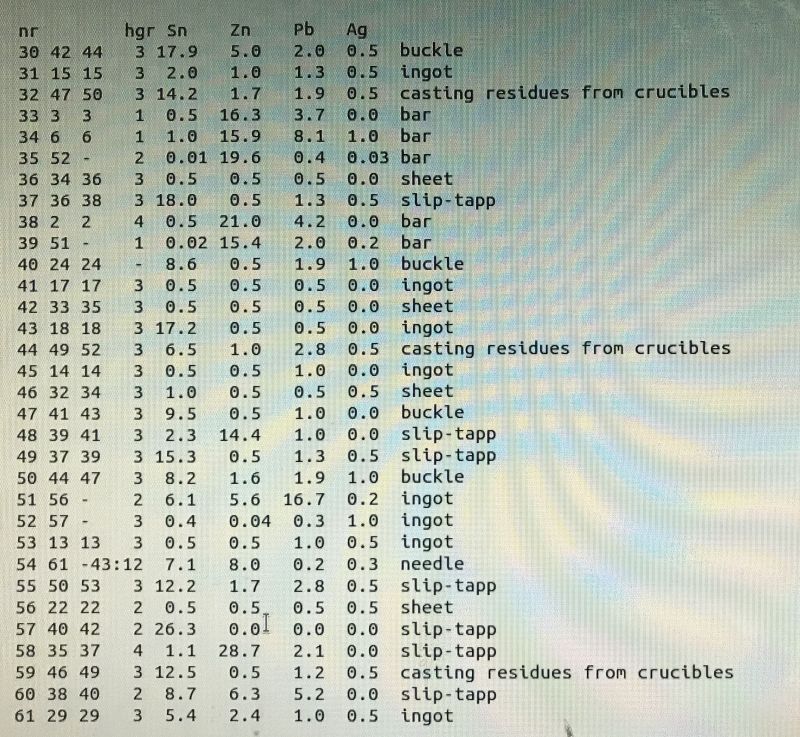
Litt:
L Binford 1972, An archaeological Perspective, New York.
L Grandin o E Hjärtner-Holdar 2002, Metallhantverk på Helgö.
Riksantikvarieämbetet Avdelningen för arkeologiska undersökningar. UV GAL.
J Hahn, 1977, Aurignacien-das Ältere Jungpaläolithikum in Mittel- und
Osteuropa. Fundamenta A9 ,Köln-Graz.
B Johansson o J Saers 1988, Försök att bedöma järnåldershusens funktioner
med utgångspunkt från benmaterialet, Laborativ Arkeologi 3.
Jozef Saers


























